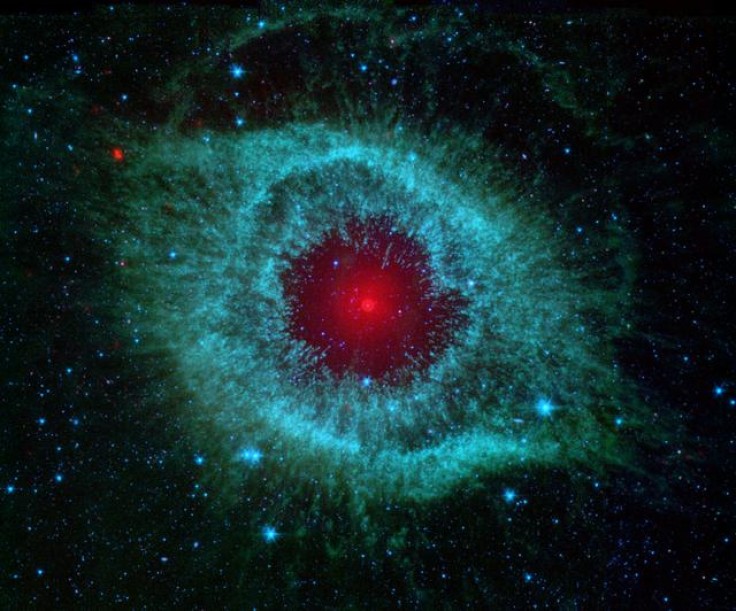NASA's Spitzer Space Telescope was able to capture a mind-blowing image of the Helix Nebula.
The Helix Nebula can be seen in this infrared image captured by NASA's Spitzer Space Telescope. The nebula is a member of the group of objects known as planetary nebulae. It can be found in the constellation Aquarius at a distance of approximately 700 light-years.
The Helix Nebula might be a bit familiar to some. That's because astronomers love to photograph Helix's vibrant colors and eerie likeness to a giant eye.
These colorful beauties were discovered in the 18th century, and they got their names because of the similarity they had to gas-giant planets like Jupiter.

Helix Nebula's Image
According to NASA's Spitzer Space Telescope, the dust surrounding the dead star is the result of rowdy comets crashing into and kicking up dust against one another.
The incredible new view of the Helix Nebula provided by Spitzer reveals colors as they appear in the infrared spectrum. The dusty dead star is visible as a dot in the middle of the nebula and is surrounded by a thick circle of dust around it, which makes it look like a giant eye.
According to Kate Su, a researcher at the University of Arizona and the lead author of a paper on the findings that was published in the March 1 issue of Astrophysical Journal Letters, "We were surprised to see so much dust around this star."
Su added that it is likely that comets that have survived the death of their sun are the sources of the dust.
The hot core of the dead star called a "white dwarf" sends out radiation that heats the material that is being thrown away, making the material glow in bright colors.
The sight of the dust initially astonished Su and the rest of her team. After that, the group of researchers obtained additional data, all of which pointed in the direction of the existence of a dusty disk.
They explained that the dust in the system ought to have been cleared out when the star died and shed its outer layers into space.
Helix Nebula Mysteries
NASA's Spitzer Space Telescope has found evidence in the past for the existence of comets that have survived around dead stars.
Way back in 2006, astronomers reported using the observatory to find a dusty disk surrounding a white dwarf. However, the disk was much closer, circling at a distance of only.005 to.03 astronomical units, making the disk appear much smaller.
According to Astronomy, George Rieke of the University of Arizona, a co-author of the paper, "Finding evidence for planetary activity around a white dwarf is a surprise." Rieke added that it was a surprise to find it twice with such different characteristics.
The data collected by Spitzer may also help explain a mystery concerning the white dwarf that is located in the Helix Nebula. Previous investigations using the Chandra X-ray Observatory and the German X-ray telescope Röntgensatellit suggested that the white dwarf was emitting X-rays with a very high energy level.
Although the white dwarf has a temperature of approximately 110,000 Kelvin, this is not quite high enough to account for the energizing X-rays. Theoretically, researchers have assumed that the white dwarf could have been accumulating material from a hidden companion star, which is what astronomers thought was happening.
However, the observations made by Spitzer point to a different conclusion. You-Hua Chu of the University of Illinois at Urbana-Champaign, who is a member of Su's team, believes that material from the newly discovered disk that surrounds the white dwarf could be falling onto the star and causing it to emit X-rays. According to Chu, the high-energy X-rays were a mystery that had yet to be solved.









